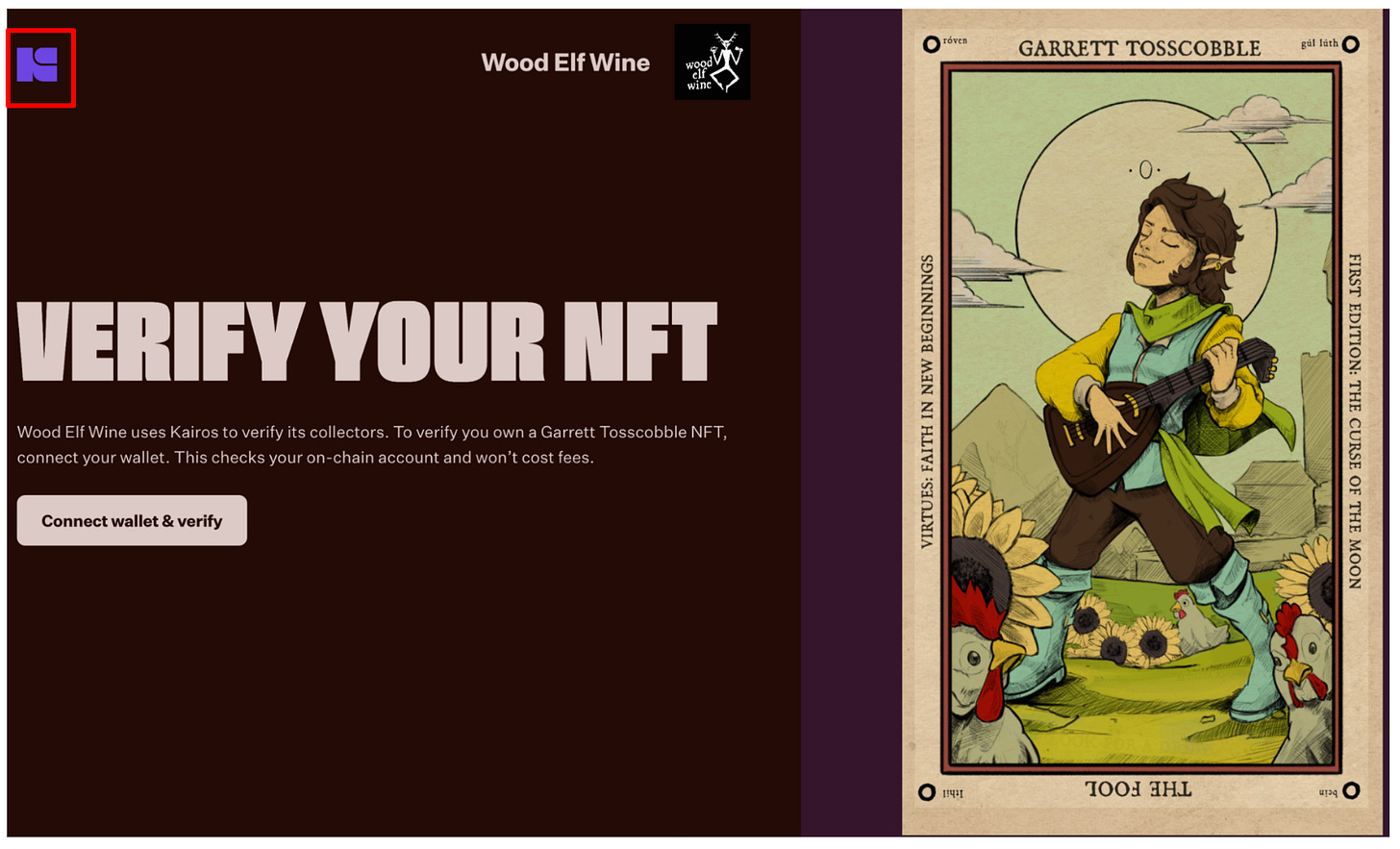[Dive #96] Diversity with Kairos
The next 100 million WON'T look like you 👀
Meme competition update:
Through this statistically significant study, I think we can confirm that Twitter has the better sense of humor. I’ll stick to serious posts with LinkedIn moving forward. The LinkedIn algo has probably punished me lol.
Otherside releases another trailer
Something that social media algos do love is media content that goes viral. And on that end, Yuga doesn’t miss.
For those that were around ~6 months ago, you probably remember when Yuga casually dropped a video trailer for the Otherside on a Friday night while everyone was out partying because they were jpeg rich .
I’m a loser so I was at home and saw NFT Twitter collectively lose their minds real-time.
If you haven’t watched it before I recommend you do. Remove the association with NFTs and enjoy the trailer for the art and storytelling. There’s a reason it went viral. I still get the goosies every time I watch it.
If you don’t know what Otherside is, I’ve written about my demo experience here. There are some ambitious plans that Yuga has a legitimate shot at turning into a reality.
Yesterday evening, Otherside repeated some of that magic and nonchalantly released another trailer for the next chapter of their metaverse story.
Goosies. Again.
Regardless of what you think about BAYC, Yuga, etc. you can’t deny that there is some level of
To be able to connect the trailers together, engage an audience, enrich the lore and storyline months apart is impressive IMO.
The collective excitement as evidenced by the post engagement (and much more in the Discord servers, private chats, etc.) has parallels with Marvel. When a Marvel trailer comes out, the community lights up Reddit threads, forums, and articles with the energy and excitement that could power a city for a week.
This continues to build on the AX (Announcement Experience) framework I’ll be thinking through. Post on that soon.
Kairos
While I was enjoying the Wood Elf Wine experience a month ago, I asked Arjun (WEW founder), what partner they worked with for the NFT verification step. I didn’t recognize the logo.
Arjun mentioned that they partnered with Kairos, and knew the founders from their past Y Combinator days. The next day, the intro was made!
I ended up having a couple conversations with Katie Chen, the CEO and got a better understanding behind Kairos’ story, positioning, and how they want to support the onboarding and adoption of NFTs for creators in the Web3 space. Thank you for your time Katie!
So, what’s Kairos?
They’re a no-code platform that makes it easy for brands and creators to create and sell NFTs.
The team is not only stacked, but also design-first. This gets me excited.
Why? Partially because I am not a traditionally creative person from a design or art standpoint. I’ve always been enamored with people who were skilled with visual communication.
That said I’m a budding artist in the field of copy paste and memes.
More important, it’s because we need more design and UX experts to enter the world of Web3.
Can you imagine onboarding millions not to mention hundreds of people to a tool like Farcaster when their homepage looks like this?
Why is there so much white space between this line and the screenshot? It’s because that’s what their website looks like lol. This is intimidating for the average user, even for someone like me that’s neck deep in Web3.
Much love to Farcaster though. I know that once they get to a certain level of scale, they’ll improve the website and make it more user-friendly, which isn’t a priority at this time. I’ve also heard good things from multiple sources and plan to check it out this weekend!
That said, this isn’t helpful for your average Jane/Joe. And the team at Kairos is here to help 💪
On top of that, there are some big names that believe in their vision as well
Jk about me being an investor. I literally ate tuna sandwiches 3 times last week. Based on that alone I don’t think anyone should reach out to me to invest 😂
So how does Kairos make it easy for creators to get started with NFTs? Their platform has no-code solutions that allow creators to:
Create NFTs
Create storefronts for NFTs
Set primary and secondary sale parameters for NFTs
Facilitate token-gated experiences for NFT collections (what Wood Elf Wine did with the previous screenshot)
Kairos supports Solana and is in beta with ETH NFTs while also integrating USD payment solutions with Stripe.
But why Kairos?
This was one of my big questions for Katie and Kairos. There are already some great platforms and tools like Bueno, Manifold, and ZORA that have helped countless creators and projects launch NFT collections.
Kairos focuses on making the end-to-end process easy for creators.
And they mean it. They’re even providing design services! Makes sense when one of their core skillsets is on the design side of things. On that note, could you help me make a logo for this newsletter Kairos team? Jk.
And this is where it gets interesting from a philosophical standpoint that Katie shared and I agree with.
Decentralization Purism
Sometimes Web3 purists believe that everything needs to be decentralized. Whether it’s me writing on Substack vs. Mirror (I do plan on publishing there soon!), social profiles on Twitter vs. Lens, or creating NFTs on Kairos vs. ZORA.
I’m not saying we shouldn’t use those platforms or __________ but decentralized. But we do need to make tradeoffs and understand what we’re prioritizing for.
Kairos is prioritizing bringing on more creators to create with Web3 tech. And in order to do so, they are centralizing some of the steps mentioned above. With that tradeoff, they are able to create a platform that makes it easy to create NFTs for people as inept as myself.
This leads to…
Diversity and Inclusivity
What Kairos focuses on through their design-first and no-code approach allows for a wider range of creators to be comfortable with embracing NFTs and Web3.
From this angle, there are clear examples that Katie pointed out that while the intentions are pure, it can be an exclusive echo chamber of Web3 fanatics. And this is where the mindset of inclusivity > being right (being fully decentralized) comes into play.
Language - A lot of the terms, acronyms, and explanations of Web3 and Crypto concepts is still alienating. As an example, it took me a while to understand how the Ethereum Merge (in two weeks!) works. I created an explainer that helped folks understand how it worked and what the benefits were, but acknowledged that I was trading off technical accuracy for comprehension.
In Katie’s words, “Do you want to sound smarter or do you want more people to understand you?”
There’s no right or wrong in this. And choosing one doesn’t mean you don’t appreciate and understand the other. However, you are able to be more effective with the goal you have in mind by choosing one vs. the other.
Gender - As most of us are aware, the large majority of participants in Web3 are men. But if we keep exclaiming that “_________ is going to onboard the next 100 million people to Web3!!!!” are all of them going to look like us? Are they going to appreciate the memes I create? Probably not, and that’s actually a good thing. It would mean we are actually achieving the goal of bringing everyone onboard the Web3 train.
In fact, I would see us being successful when the next wave(s) of Web3 adopters are more women than men or non-English native speakers. That would be a win for the whole space. And to stretch the definition of ‘decentralization’ wouldn’t be more decentralized from a diversity standpoint? 😉
And if those people that onboard transition to seek more purely decentralized tools and platforms, that’s awesome! But it’s ok to start at Web2.1 or Web2.5 and then full steam ahead to Web3.
Cheers to Kairos for onboarding more creators to the crazy and beautiful world of NFTs and Web3. And to them creating a logo for me…totally kidding 🤔
See you next week and enjoy the long weekend if you have it off! One less day of me crashing your e-mail inbox :)





















Love how Kairos is putting real effort into diversity and inclusion! Great post TPan!